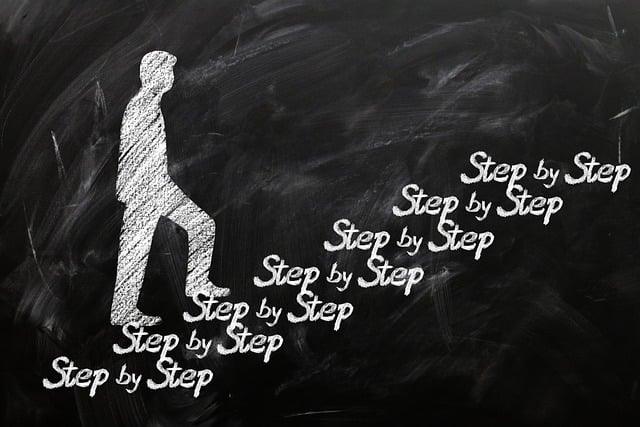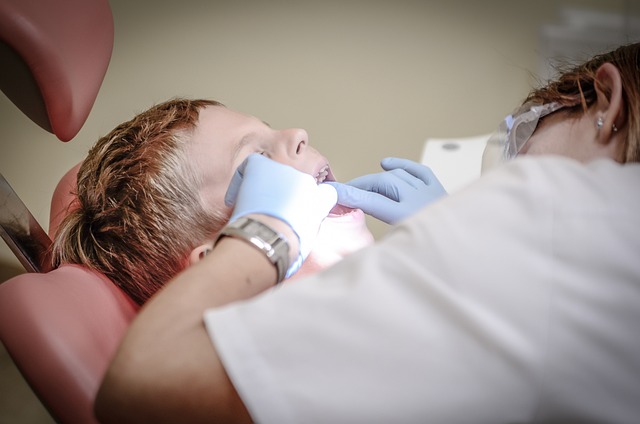Safe Rinsing Post Tooth Extraction: What You Should Know
Welcome to a guide that answers ????all your questions about safe rinsing post tooth extraction. If you’ve recently had a tooth extraction, taking proper care to ensure a smooth recovery is paramount. Oral health is vital, and understanding the do’s and don’ts of rinsing can make???? all the difference in preventing complications and promoting healing. In this article, we will???? delve into everything you need to know about???? safe rinsing practices post???? tooth extraction. Rest assured, we’ll provide you with informative advice and friendly tips to aid your recovery journey. So, let’s dive in and equip you with the knowledge???? you need to achieve a healthy and speedy recovery after your???? tooth extraction.
1. Understanding the Importance of Safe Rinsing after ????Tooth Extraction
After getting a tooth extraction, it’s crucial to understand how essential safe rinsing is to ensure a smooth recovery process. Proper rinsing not only helps maintain oral hygiene but also promotes faster healing and minimizes the ????risk of infections.
Here’s why safe rinsing after tooth extraction should be a top priority:
-
- Preventing Infections: Rinsing with a saltwater solution or prescribed mouthwash can help eliminate bacteria and reduce the risk of infections in the extraction site.???? This is vital as post-extraction, there is an open wound which needs to be protected accordingly.
- Alleviating Discomfort: Gently rinsing your mouth can help remove any food particles or debris that may have accumulated around the extraction???? site. This promotes ????faster healing and reduces the chances of developing discomfort ????or complications.
- Promoting???? Healing: Safe rinsing aids in keeping the extraction site clean, removing any potential irritants, ????and allowing blood clots to form properly. This helps in the natural healing process and prevents the formation of dry sockets—an uncomfortable condition that can prolong your recovery time.
Remember, following your dentist’s instructions for safe rinsing techniques and frequency is essential. By doing so, you’ll be actively contributing to a smoother and ????swifter???? recovery after your tooth extraction procedure.

2. How Proper Rinsing Technique Can Aid in a Swift Recovery
Proper rinsing technique plays a crucial role in???? promoting a swift recovery after an injury or surgery. By following the right method, you can help prevent infections, reduce pain, and promote healing. Here are a few key points to keep in mind when it comes to rinsing:
-
????
- Choose the right solution: Use a???? gentle saline solution or???? a prescribed wound ????cleanser???? to wash the affected area. Avoid using harsh soaps or disinfectants that???? can irritate the wound.
- Warm water is best: Use warm water while rinsing as it???? helps increase blood flow to the area, removing debris and promoting healing.
- Gently clean the wound: Use a???? soft, sterile gauze pad or cloth to gently cleanse the wound, moving in ????circular motions from the inside towards the outside. Avoid scrubbing or rubbing vigorously, as this may delay healing.
Remember,???? the goal of proper rinsing technique is???? to keep the wound clean and free from debris or bacteria that may hinder ????the recovery process. If???? you have any concerns or questions, don’t hesitate to seek guidance from your healthcare provider. By following these simple tips, you can contribute to a???? smooth and speedy recovery.

3. Step-by-Step Guide:???? Safe Rinsing Practices following Tooth Extraction
After having a tooth extracted, it is important to follow safe rinsing practices to promote proper healing and minimize the risk of complications. Here is ????a step-by-step guide to help???? you maintain good oral hygiene during your recovery:
-
- Use a saltwater rinse: Dissolve half a teaspoon of salt in ????a cup of warm ????water. Gently swish this solution in your mouth ????for about 30 seconds, making sure to cover the extraction site. Spit out the mixture and repeat a few times a day to reduce inflammation and keep the area clean.
- Avoid vigorous rinsing: While rinsing is important, be gentle to prevent dislodging the blood clot that forms in the socket. This clot is crucial for ????healing, so avoid forcefully spitting,???? using a mouthwash, or swishing too vigorously.
- Opt for lukewarm ????or cool water: Use lukewarm or cool water???? to rinse your mouth, especially in the 24 hours immediately following your ????tooth extraction. Hot water can dissolve the blood clot and hinder the healing process.
- Stick to water: Avoid using any ????carbonated or???? alcoholic beverages, as well as any drinks that are too acidic or contain particles that may irritate the extraction site. Plain water is your best bet for safe and effective rinsing.
By following these safe rinsing practices, you can help ensure a smooth and speedy recovery after your tooth extraction. If you have any concerns or questions, don’t hesitate to reach out to your dentist for guidance. Remember, taking care of your oral health ????during this period is essential for optimal healing.

4. The Benefits of Gentle Rinsing for Promoting Healing and Reducing Discomfort
The gentle rinsing technique can play a crucial role in promoting healing and reducing discomfort after a procedure or injury. By using a gentle flow of water or saline solution, this method helps keep the wound or affected area clean, preventing bacterial growth, and minimizing the risk of infection. It is particularly effective for delicate areas, such as mouth sores, post-surgical wounds, or burns.
Gentle rinsing not only aids in???? cleanliness but also contributes to a faster healing process. It helps remove dead skin cells, debris, and other foreign particles that could hinder the healing process. Additionally, gentle rinsing can provide relief by soothing ????the affected area, reducing swelling,???? and alleviating discomfort or itching.
When???? practicing gentle rinsing, remember to:
-
- Use lukewarm water or a saline solution recommended by your healthcare provider.
- Gently pour or spray the solution over the wound or affected area.
- Pat the area dry???? with a clean towel???? or let it air dry.
By incorporating gentle rinsing into your healing routine, you can help ensure a more comfortable???? and swift recovery.
5. Choosing the Right Rinse for Post Tooth Extraction Care: A Comprehensive Overview
After a tooth extraction, proper care is essential to ????ensure a quick and smooth recovery. One important aspect of post-tooth extraction care involves choosing the right rinse to promote healing and prevent complications. In this comprehensive overview, we will cover the various types of rinses available and their benefits.
1. Saltwater rinse: This homemade rinse is a simple and effective option for post-tooth extraction care. Mixing half a teaspoon of salt in eight ounces of warm water creates a soothing???? rinse that helps reduce???? pain, swelling, and inflammation. Gently swish the saltwater rinse around your mouth for about 30 seconds, making sure not to swallow it. Repeat this process several times a day to keep the extraction site clean and bacteria-free.
2. Antibacterial mouthwash: Your dentist may recommend an antibacterial mouthwash to prevent infection and promote healing. These specially formulated rinses contain ingredients???? like chlorhexidine, which effectively kill bacteria and ????reduce the risk???? of complications. Follow the instructions provided by your dentist to ensure proper usage and maximum benefits.
6. Common???? Mistakes to Avoid When Rinsing after Tooth Extraction
Proper rinsing technique is crucial for a successful???? and speedy recovery after a tooth extraction. However, there are ????a few???? common mistakes that???? patients often make. By being aware of these errors, you can take the necessary precautions to ensure a smooth healing process. Here are???? some mistakes to avoid when rinsing after tooth extraction:
- Using excessive force: ????It’s important to be gentle when rinsing after a tooth extraction. ????Avoid using too much force as???? it can dislodge the blood clot that forms in the extraction site, leading to a condition called “dry socket.” To prevent this from happening, use a saltwater rinse or prescribed mouthwash and ????swish it gently in your mouth for the recommended time.
- Not rinsing often enough: While it’s important not to rinse too vigorously, it’s equally crucial???? to maintain regular rinsing to keep the extraction site clean. This helps remove food particles and debris that can???? cause infection or delay???? the healing process. ????Follow your dentist’s instructions on how often to rinse???? and make sure to stick to the recommended frequency.
By avoiding these common mistakes, you can support the ????healing process and reduce the risk of complications after???? a tooth extraction. If you have any concerns or questions regarding rinsing or the recovery???? process, don’t hesitate to reach out to your dentist for assistance.
7. Tips and Tricks for Safe and Effective Rinsing after Tooth Extraction
Proper rinsing is crucial for a safe and effective recovery after tooth extraction. To ensure you’re doing it correctly, follow ????these helpful tips and???? tricks:
- Use lukewarm saltwater solution: Prepare a solution by dissolving half a teaspoon of salt in eight ounces of lukewarm water. Gently rinse your mouth with this solution at least 24 hours after the extraction. Saltwater helps cleanse the area, reduce swelling, and promote healing.
- Be gentle: ????During the first few days, ????be careful when rinsing to avoid dislodging the blood???? clot that forms to protect the extraction site. Use a gentle swishing motion without forcefully spitting or ????swishing too vigorously.
- Avoid using mouthwash: Stay away from alcoholic ????mouth rinses, mouthwashes containing harsh chemicals, or hydrogen???? peroxide???? solutions. These can irritate the extraction site and delay healing.
- Keep up ????with oral hygiene: Even though you???? should avoid directly brushing the extraction site, continue brushing other areas of your mouth to maintain oral health. Use???? a soft-bristled toothbrush and be cautious around the extraction site.
- Avoid ????using straws: Sucking through a straw increases the risk of developing a dry socket, which can cause severe pain. Therefore, it’s wise to avoid using straws for at least a week after extraction.
By following these tips and tricks, you’ll promote a safe and effective recovery process after???? your tooth extraction. Remember, if you experience excessive pain, bleeding, or any concerns, always reach out to your dentist for professional guidance.
8. Exploring Alternative Rinsing???? Methods for Sensitive Patients
For patients with sensitive???? teeth or gums, finding a suitable rinsing method can???? make a world of difference. Fortunately, there are several alternative techniques you can explore to ensure a comfortable oral care routine. Here are a few options you might consider:
- Oil Pulling: This ancient Ayurvedic practice involves swishing a tablespoon???? of???? oil (such as coconut or sesame oil) in your mouth for 15-20 minutes before spitting it out. Oil pulling is believed to help???? reduce bacteria, plaque, and inflammation in the mouth.
- Warm Saltwater Rinse: Dissolve half a teaspoon of salt in warm water and swish ????it around your mouth for 30 seconds before spitting it out. Saltwater rinses can help soothe inflamed???? gums and promote healing in the mouth.
- Chamomile Tea Rinse: ????Brew a cup of chamomile tea, let it cool, and use it as a rinse after regular brushing. Chamomile has anti-inflammatory properties that can provide relief to sensitive gums.
Remember, it’s essential to consult with your dentist or oral care professional to determine the most suitable alternative rinsing method for your specific needs. They can provide personalized advice and address any concerns you may have. With these alternative options, maintaining your oral hygiene will ????become a more enjoyable experience!
9. Top Recommendations from Dentists: Safe Rinsing Tips and Products
In order to maintain???? good oral hygiene, dentists recommend incorporating safe rinsing???? tips and using ????certain products.???? Here are some top recommendations from dentists:
Safe Rinsing Tips:
- Use a ????mouth???? rinse or mouthwash that contains fluoride to???? help strengthen the teeth and prevent cavities.
- Rinse ????your mouth with water after meals to remove???? any food particles and reduce the risk of plaque ????buildup.
- Avoid using alcohol-based mouthwashes, as they can cause dry mouth and may irritate sensitive gums.
- Swish the mouthwash around in your mouth for at least 30 seconds before spitting it out, ensuring it reaches all areas.
Recommended Products:
- Look for mouthwashes that have the American Dental Association (ADA) seal of acceptance, indicating they meet the necessary safety???? and effectiveness standards.
- Consider using a fluoride rinse specifically formulated for individuals prone ????to tooth decay.
- If you have sensitive teeth or gums,???? opt for a mouth rinse that is gentle and designed to alleviate discomfort.
- For individuals with dry mouth, select a rinse that is specifically developed to increase saliva production and maintain oral moisture.
By following these safe rinsing???? tips and using recommended products, you can take steps to improve your oral health and keep your smile bright.
10. FAQs: Addressing Your Concerns about Safe Rinsing Post Tooth???? Extraction
If you’ve recently undergone a tooth extraction, it’s essential to take proper care???? to ensure a???? smooth recovery. One common concern is the safety of rinsing your mouth after the procedure. Here, we address some frequently asked questions to put your mind at ease:
-
- Can I rinse my mouth after a tooth extraction? Yes, rinsing your mouth???? is an important step in maintaining oral hygiene post tooth extraction. However, it’s crucial to ????do it correctly to avoid complications.
- When should I start rinsing? You should wait at least 24 hours after the extraction before you start rinsing. This allows the blood clot formed at the extraction site to stabilize and reduces the risk of dislodging it.
- What type of rinse should I use? Your dentist will provide specific instructions, but typically a warm saltwater rinse (half a teaspoon of salt???? dissolved in a cup of warm water) is recommended. Avoid commercial mouthwashes during the initial healing period as they ????can irritate the extraction site.
-
????
- How often should I rinse? For the first few days, rinse your mouth gently after meals and before bedtime. Aim to rinse at least 2-3 times a day.
- How should I rinse? Take a small amount of the warm saltwater solution in your mouth, gently swish it around, making sure not to spit or swish vigorously. Tilt your head slightly forward and let the rinse flow out gently. Avoid spitting ????forcefully, as it may dislodge the blood clot and hinder healing.
- What if I experience excessive bleeding or pain? If you notice excessive bleeding or severe pain while rinsing or at any other time during the healing process, contact your dentist immediately for further guidance and evaluation.
We understand that post-tooth extraction care can be intimidating, but by following these guidelines and consulting your dentist, you can ensure a safe and smooth recovery. Remember, every individual’s healing process may vary, so it’s vital to listen to your???? dentist’s instructions and address any concerns promptly.
Frequently Asked Questions
Q: Why is safe rinsing important post tooth extraction?
A: Safe rinsing is crucial after tooth extraction because it helps minimize the risk of infection and promotes proper healing of the extraction site.
Q: How soon after the tooth extraction should I start rinsing?
A: ????Typically, it is recommended to wait 24 hours before beginning any rinsing to ensure a proper blood clot forms at the extraction site. However, always follow your dentist’s specific instructions.
Q:???? What kind of rinse should I use?
A: Your dentist will likely???? prescribe a medicated mouth rinse or provide specific instructions on which ????type of rinse is best for your case. It’s essential to follow their guidance to
Q: How should I rinse my mouth after a tooth extraction?
A: Gently swish the prescribed rinse around your mouth without vigorous gargling. Make sure to concentrate on the area closest to the extraction site, being careful not to disturb any blood clot that may have formed.
Q: Can I use a saltwater rinse instead?
A: Saltwater rinses are often useful ????after tooth extractions, but it is best to consult your dentist first. They can provide guidance on ????when and how to use a saltwater rinse effectively.
Q: How frequently should I rinse my mouth?
A: The frequency of rinsing will vary???? depending on your dentist’s recommendations and your specific situation. Generally, dentists advise rinsing multiple times a day, especially after meals, and before bed.
Q: What should I???? do if I experience bleeding during rinsing?
A: Mild bleeding is common post tooth extraction. If you notice bleeding increasing during rinsing, take a break and allow it to settle. If the bleeding persists or becomes excessive, contact your dentist???? for guidance.
Q: What happens if I accidentally dislodge the blood clot during rinsing?
A: Dislodging ????the blood clot can disrupt the healing process, leading to a condition called dry socket. If you accidentally dislodge the clot, contact your dentist immediately for further instruction.
Q: Are there any specific instructions for mouth rinsing after wisdom tooth extraction?
A: Wisdom tooth extraction may require extra care due to the location and potential complications. Your dentist will provide you with specific instructions tailored to the extraction to ensure proper healing.
Q: How long should I continue rinsing after a tooth extraction?
A: The duration of rinsing will vary depending on your dentist’s instructions. Typically, rinsing is recommended until the extraction site is ????fully healed and your dentist gives you the all-clear to ????discontinue it.
Remember, if you have any concerns or questions regarding safe rinsing post tooth extraction, don’t hesitate to contact your dentist for personalized advice.
Conclusion
In conclusion, it’s crucial to prioritize safe rinsing post tooth extraction to ensure a speedy and complication-free recovery. Remember,???? rinsing with saltwater???? can effectively alleviate discomfort, reduce swelling, and promote healing. Be sure to follow your dentist’s instructions carefully and maintain proper oral hygiene during this critical period.???? While it may seem like a small step, safe rinsing can make a significant difference in your overall dental health. So, don’t underestimate the power???? of a simple saltwater solution to help you sail smoothly through the post-extraction journey. Your dentist and your healing gums will thank you for it!






